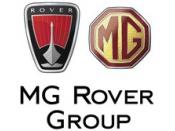Introduction
Every organisation aims to maintain its market dominant position as well as to maximise its profitability through a series of activities, so as to remain competitive within framework of the market mechanism and to advance functions. It is necessary for managers to be familiar with the overall performance of the enterprise, in an effort to develop an effective strategic plan for companies' prosperity and progress. Thus it is essential to identify the capabilities of a company in economic terms, so as to enable first line management to determine the business's objectives and targets, concerning its operations.
In an effort to examine an organisation in financial terms, so as to provide managers with sufficient information, referring to its economic evolution, certain financial statements have evolved, such as Balance Sheet, Trial Balance, Profit and Loss Account, Ratios and so on.
A company's published report and accounts will contain a confusing set out of figures.
Whilst these figures will all be based on historical facts and can be taken as accurate, a question arises; what do these figures mean? An answer to these question will require an analysis of the figures contained within published report and accounts, using a series of Financial Ratios.
In this assessment, we will analyse and critically evaluate the most common financial ratios by incorporating examples relevant to BMW(GB) Limited. This assessment will be focusing mainly on the company BMW (GB); we will also compare the results to those of MG Rover Group Limited. These financial ratios have been applied according to most recent figures that appear on the Athens-Fame electronic library.
Accounting Ratios
A ratio analysis transforms accounting numbers into meaningful ratios that highlight strengths and weaknesses of a business. This analysis does not require a thorough understanding of accounting or finance to be used.
There are many different groups of people (or stakeholders) who are interested in the accounts of a company, including:
1) The management and the employees - to see if pay rises are likely, or
2) To ensure that their jobs are secure.
2) Creditors - to ensure that the business has the necessary money to repay them.
3) Potential lenders - to see if the business is solvent and profitable enough to repay any loans.
4) The community - to ensure that jobs and services for the local community are assured.
Using financial ratios can assist these people in identifying the financial strengths and weaknesses of a company, as well as indicating to the company itself those areas that need corrective action.
However, ratio analysis does not provide a complete and exhaustive analysis of a company, and there are several other factors that the stakeholders and the company will need to take into account, in order to get the 'full picture' of its financial position:
- The state of the economy (i.e. if the economy is in a recession, then the ratios are more likely to be unsatisfactory than if the economy is experiencing a 'boom').
- The performance of competitors (i.e. it may be the case that the industry is in decline, in which case all the rival businesses are likely to be experiencing deteriorating ratios).
- Comparison year on year. The ratios for the business from the current year must be compared to the ratios from previous years, in order to see any marked improvement or deterioration in the financial performance.
- External factors. The financial ratios do not take into consideration any effects on the local community or the environment (i.e. they ignore the effects of pollution, job losses, etc). Therefore, in order to measure the performance of a business, factors other than mere financial ratios need to be considered.
Since I have provided some information about finance, financial statements and ratios, it is necessary to refer to the company that I will be focusing on.
An overview of BMW (GB) Limited
The BMW Group concentrates entirely on premium standards and outstanding quality for all its brands and across all relevant segments. With the brands BMW, MINI and Rolls- Royce cars, the BMW Group has been focusing on selected premium segments in the international automobile market since the year 2000.
Profitability Ratios
Profitability ratios show how successful a company is in terms of generating returns or profits on the investment that it has made in the business. If a business is liquid and efficient is should also be profitable. The three main ratios that can be used to measure the profitability of the business are, the gross profit margin, the net profit margin and the return on capital employed (ROCE). We have applied below those ratios to BMW(GB)Ltd and have compared them with MG Rover group Ltd.
BMW (GB) Ltd MG Rover Group Ltd
Gross Profit 38.9% 9.21%
Net Profit 30% -6.28%
ROCE 19.18% 0.40%
The gross profit margin measures the gross profit of the business as a proportion of the sales revenue. BMW(GB) Ltd gross profit margin is clearly higher than MR Rover Group which seems to be in a risky position. BMW (GB) Ltd 's gross profit margin is satisfactory if we take into account the high cost that is involved for the production of high street cars. The net profit margin measures the net profit of the business as a proportion of the sales revenue. BMW (GB) Ltd it makes a net profit of around 30%. Net profit margin is reasonably high. Due to the nature of the industry, BMW operates on high prices and therefore high profit margins. We should also take into account the high degree of risk and competition that exist in the car industry may influence the net profit margin. MG Rover Group Ltd on the other hand according to the figures faces losses due to high expenses. ROCE is often referred to as the 'primary accounting ratio' and it expresses the annual percentage return that an investor would receive on their capital. BMW (GB) Ltd ROCE is low compare to MG Rover Group Ltd , that may mean that the capital assets are low, however it is not always a good thing if its high.
Liquidity Ratios
The liquidity ratios give some indication of the make up of the working capital of the company but are primarily concerned with its ability to meet its short term liabilities. Liquidity ratios are probably the most commonly used of all the business ratios. Creditors may often be particularly interested in these because they show the ability of the business to quickly generate the cash needed to cover its expenses. The information should also be highly interesting to the company, since the inability to meet short term debts would be a problem that deserves immediate attention.
Liquidity ratios are sometimes called working capital ratios because that, in essence, is what they measure. Liquidity ratios are commonly examined by banks when they are evaluating a loan application. Once the company gets the loan, the lender may also require maintaining a certain minimum ratio, as part of the loan agreement. Thus steps to improve the liquidity ratios may be necessary.
The two main ratios that can be used to measure the liquidity of the business are the current ratio and the quick or 'acid test' ratio. The current ratio measures current assets as a proportion of current liabilities. At BMW (GB) ltd case the current ratio is 1.23 times which is relatively low. Manufacture business often have a relatively high current ratio because 'it is necessary to hold stocks of finished goods, raw materials and work in progress'. (Atrill & McLaney, 2004, p 163) Also as most of the cars are sold on credit debtors will incur. MG Rover Group Ltd current ratio measurements shows -1.1times. Liquidity is vital for the survival of the business but in MG Rover Group Ltd case current ratio measure is low and the company faces difficulties to cover its short term liabilities from the current assets.
The 'acid ratio' measures current assets less stock as a proportion of current liabilities; BMW (GB) Ltd shows 0.66 times . MG Rover Group Ltd shows -0.75 this may mean that '...the stock in hand cannot be converted into cash quickly'. (Atrill& McLaney, 2004, p164)
Solvency
Solvency ratios are concerned with the company's ability to meet its obligations in the short term, solvency ratios take more of a long run view. The common of the solvency ratios are, gearing and the interest cover ratio.
The gearing ratio measures the proportion of capital employed (i.e. the value of the business) which us funded by long term liabilities (i.e. the proportion of the value of the business which is interest- bearing debt). The gearing ratio for BMW shows 260.55%,which means the business is not in risk, MG Rover Group Ltd on the other hand shows 543.12%that means the company borrows heavily and it might be in risk to become insolvent.
The interest cover ratio compares funds available to pay interest to the total amount of interest that has to be paid. The funds available for interest are the company's profits before interest and taxes. This ratios show that BMW (GB) covers 13.9 times its cost, this ratio shows that the level of the profit is considerably higher than the level of interest payable. In contrast MG Rover Group ltd shows losses as it covers -7.27 times the cost. Due to the low level of profit coverage there is a greater risk to the shareholders that may not meet the interest payments.
Efficiency ratios
Efficiency ratios are ratios that come off the balance sheet and the income statement and therefore incorporate one dynamic statement, the income statement and therefore incorporate one dynamic statement, the income statement and one static statement the balance sheet. These ratios are important in measuring the efficiency of a company in either turning their inventory, sales assets, accounts receivables or payables. It also ties into the ability of a company to meet both its short and long term obligations. This is because if they do not get paid on time, how will the company get paid on time? Efficiency ratio can be described as an exchange rate. But even efficiency ratios can be misleading when viewed alone.
There are five main ratios that can be used to measure the financial performance of a company. These are; asset turnover ratio, the fixed assets turnover ratio, the stock turnover ratio, the debtors collection period ratio and the creditor payment period ratio. In our case we will concentrate on asset turnover ratio, debtors' collection period ratio, creditors' payment period ratio and stock turnover ratio.
The asset turnover ratio measures the productivity of the business (i.e. how many pounds worth of revenue can be generated from the assets employed?). This ratio measures the efficiency of the management using the capital employed in generating the sales. In the case of BMW(GB)Ltd each pound of their capital employed generates 26, 92 pounds of sales where at MG Rover Group Ltd case, each pound of their capital employed generates 17,24 pounds of sales. The comparison of the two companies in these instances indicates that BMW(GB) Ltd capital employed has been better utilised that MG Rover Group Ltd.
The debtors' collection period ratio shows how long, on average, a business takes to collect the debts owed by customers who have purchased their goods on credit. This ratio shows the ability of managers to negotiate the time that debtors will be given in order to pay back the credit given, in our case by BMW (GB) Ltd. In average BMW (GB) Ltd receives payments of its creditors every 11 days. It is obvious that the company receives payments extremely quickly as commonly a 30 days credit is required. MG Rover Group Ltd also receives payment quickly (2.82 days). Control debt collection is extremely important for the smooth run of a business as it able a company to cover its expenses. Companies that cannot cover its debts quickly may result to financial complications that could put the business to financial risks. Nevertheless, this term may to apply to all business.
The creditor payment ratio shows how long, on average, a business takes to pay the debts that owned to creditors by a business. This ratio shows the ability of managers to negotiate the time that BMW(GB) Ltd will pay its suppliers within a year. In average the company is able to cover its debts in 5 days and thus puts the company in a healthy position.
The stock turnover ratio measures the number of times in a twelve month period a business sells its stock. This ratio shows that BMW has changed the stocks almost eight times (7.74) Rover on the other hand has changed the stocks almost six and a half times (6.45).This ratio indicates that BMW turnover stock is more affected.
In that point it is essential to also outline the use of fixed assets turnover ratio. This ratio shows how many pounds worth of sales revenue can be generated from the fixed assets. At BMW's case for instance it is 0.66.
Summary of the findings
After looking to the ratios of BMW and compared them to ones of MG Rover we have noticed that our main company has showed the ability to control its cash. For the creditor payments period it has also shown the ability to reduce the creditor payment period. This shows that BMW has a strong bargaining with customers. MG Rover on the other hand, ROCE is very low which may indicates that the company's capital assets are low and its performance is low. Advocates consider ROCE as a main measure of profitability, by taking that into consideration MG Rover find difficulties to deal with the returns to suppliers in the long term. Gearing ratio also shows that the company situation.
Financial ratios analysis have informed us of about the performance of the business to which we have related them. Some financial ratios analysis is useful technique for the interpretation of financial statements, however their analysis '... it is only meaningful when it is compared to another ratio'. (Broadbent and Cullen, 1997, p55) Although financial ratios are undoubtedly useful form of a company's performance analysis, they do have their limitations and problems, which we will view below.
Advantages and Disadvantages of Financial Ratios
Ratios are useful technique to view 'at a glance' a company's performance, however there are based on financial statements, hence they are dependent on the quality of these. But as the quality of these statements cannot be reassured, ratios may '...inherit the limitations of the financial statements on which they are based'. (Atrill and McLaney, 2004, p 179)
Ratios can only provide a restricted picture and can only measure relative performance position. Also any ratios based on balance sheet figures such as liquidity ratios may not describe accurately the financial position of the business.
As we have mentioned earlier ratios can only be meaningful measurement of a company's performance if there are compared to other ratios. However , problems with the comparison of two companies ratios can also occur due to the differences such as financial year and financial policies.
'Ratio help to highlight the financial strengths and weaknesses of a business, but they cannot, by themselves explain why certain strengths and weaknesses exist, or why certain changes have occurred'. (Atrill and McLaney, 2004, p179)



Financial ratio
Wow!! Great and informative paper.
1 out of 1 people found this comment useful.